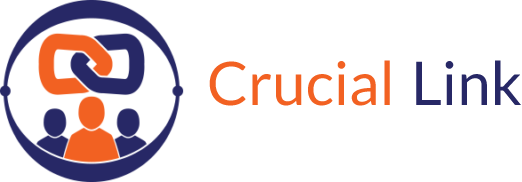Crucial Link is only as strong as our Candidates.
We want to ensure you have every resource you need when you need them. Below is essential information that will help you in your next staffing assignment. If you can’t find the information you’re seeking, use the Question Contact Form at the bottom of the page and submit your question to us.

In some industrial settings, uniform-type clothing may be a dress code requirement. Of course, uniforms should be in good condition and appropriate for the workplace.

In some industrial settings, hard hats may be required. Note that safety standards change over time, so staying current on workplace safety requirements is crucial. The employees in this example are dressed casually in shirts and pants. However, their safety vests make them visible to other employees while they’re on the job.

The workers are dressed for a warehousing delivery function. In this case, they’re wearing a jumpsuit and a baseball cap. The jumpsuit allows them to be comfortable and efficient, as there are no extra layers or other accessories to impede their progress. The hat also protects them from the weather.

The construction workers represent various clothing options for a manufacturing dress code. For example, plaid and denim shirts are a staple in an industrial workplace. Additionally, cargo-type khaki jackets still look professional and provide warmth during cold Cleveland weather. With necessary safety accessories, such as a fluorescent vest and hard hats, these employees are ready to work and look positive and professional.

This worker is suitably dressed in a casual button-down shirt and jeans. Her clothes are appropriate for business attire in her work environment. She also adheres to safety standards by wearing steel-toed boots, a fluorescent vest, and proper headgear.

The employee and her trainee have dressed appropriately for a manufacturing dress code environment. The orange undershirt topped with a royal blue protective long-sleeved shirt may be the company’s colors. This uniform is consistent with many seen in a manufacturing environment. Both wear protective yellow vests that make them visible from a distance in a plant. They also wear protective headgear that is just one step removed from a hard hat.

The surveyors exemplify a proper dress code for an industrial, construction, and manufacturing workplace. Their tops are well-maintained and professional but still appropriate for a work environment.
Do you have Questions?
Do you have Questions?
Hire Right Videos: Share ideas, tips, and insights to help you to find and keep the position you want.









